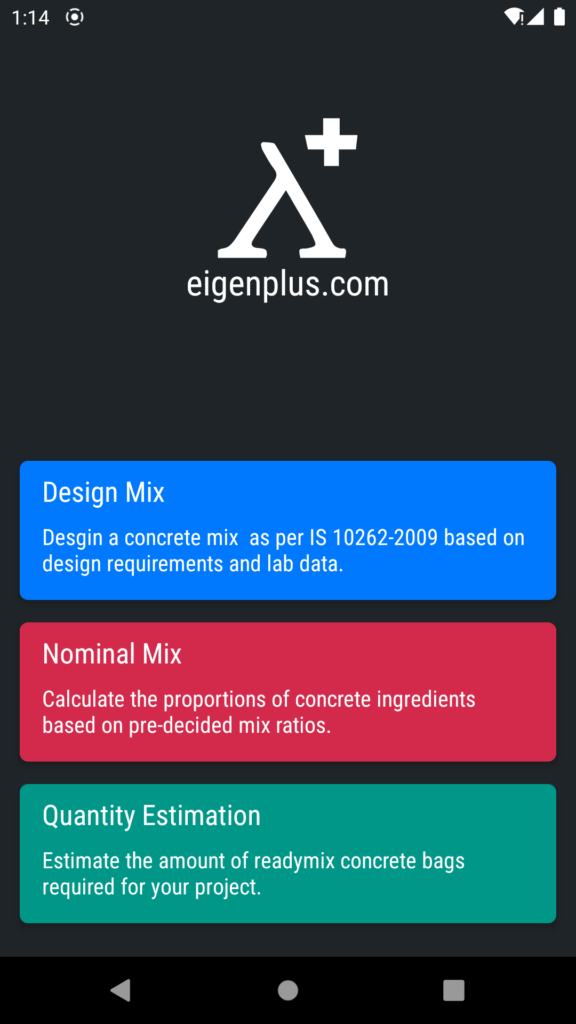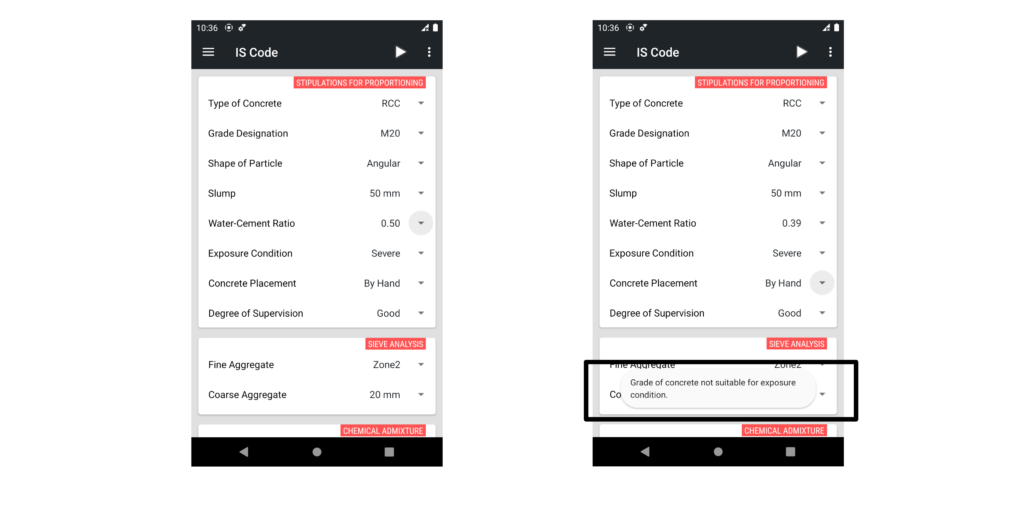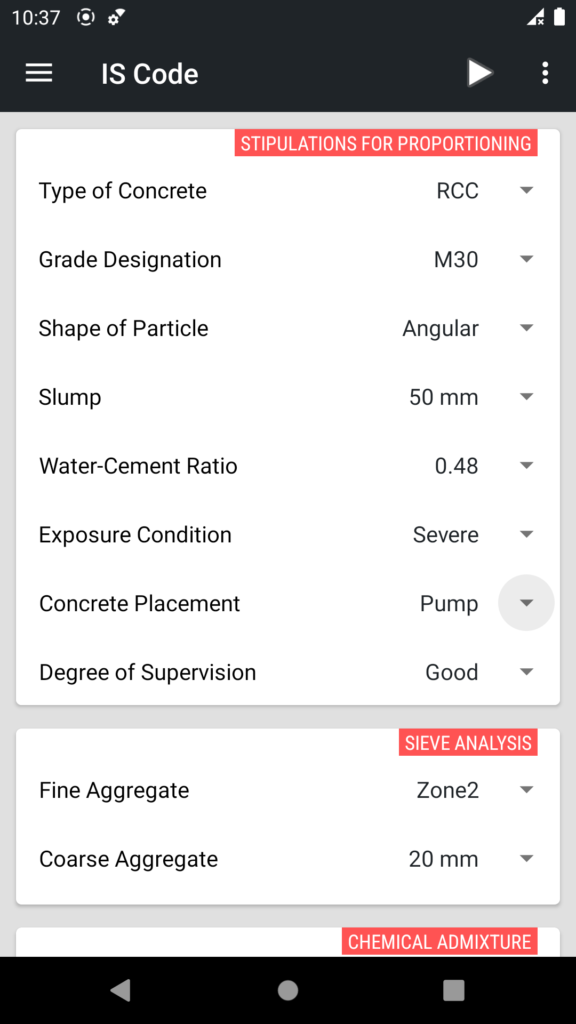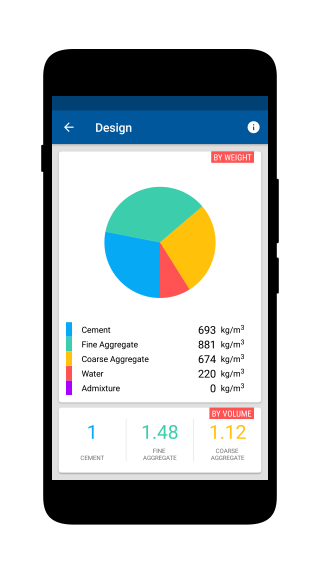While designing the concrete mix, you might have noticed the parameter called Exposure condition. This parameter plays a significant role in the design. Hence, it is very important to have a prior knowledge about the exposure condition of the area in which the structure is to be constructed. Understanding the effect of exposure in CMD will make you realise how drastically this parameter effects the overall design. Here you will come to know, which grade of concrete is best suited for different types of exposure condition. The Concrete Mix Design Calculator will help you to quickly understand the concept of exposure condition in mix design as it is effortless to use and has an excellent graphical interface. Here you can go a step further by varying the parameters and analysing the effect in design to get a in depth knowledge.
Check this out “why exposure condition is important in concrete mix design“
- How exposure condition effects the concrete mix ?
- What are the different exposure condition as per Indian standards ?
- How to effectively set different parameter to get efficient design?
To get most out of this tutorial, you should know exposure condition, characteristic strength, Moisture content, Specific gravity, Dry volume. Having some understanding of these concepts will greatly help you understand the new ones you’ll be exploring in this tutorial.
Problem Statement
To understand the effect of exposure condition in concrete mix design we are using the concrete mix design calculator application. Let us imagine if you have to construct a building in Andaman and Nicobar islands, which has an extreme exposure condition. As per IS -456:2000 for PCC and RCC, five exposure conditions are classifications, namely, mild, moderate, severe, very severe, and extreme.
Steps for concrete mix design using the concrete mix design calculator
Step 1: Download the application from play store and install it. Once you are done with the installation, open the application and select the first option “Design mix” -to design a concrete mix as per IS 10262:2009.

Step 3: Input the data as per the problem. The different stipulations for proportioning, data of sieve analysis of aggregates, data of chemical admixtures if applicable, and also the different test data for materials.

When you use M20 as grade of concrete and keeping all the other parameters same as per the problem, and if you press the play button of the calculator an error message pop’s up (as shown in the screenshot). In this case the error is because of the grade of concrete, we are using m20 which is not suitable for the exposure condition.
Step 4: Change the grade of concrete to a higher grade which is compatible with the exposure condition. So let us select M30 as grade of concrete.

Step 5: Next again press the play symbol, to get the final output.
Remark:
- Yes you will also get the complete calculation of the mix design. Just you have to go back from this final out put page to get the complete calculation.
- If you again go back then you will be directed to the input page. You can repeat the design using different problem.
We hope you realised the importance of exposure condition, and could relate this with grade of concrete. Further, you can use CMD app to change the parameter and study the effect on design mix.
Concrete Mix Design
- Calculate cement, sand and aggregate quantity in concrete.
- Calculate the number of premix bags required for your project.
- Option to set your own size and rate of premix bags.
- Calculate the volume of concrete required for slabs, walls, footings and columns.
- Calculate the weight of ingredients required for preparing the calculated volume of concrete.
